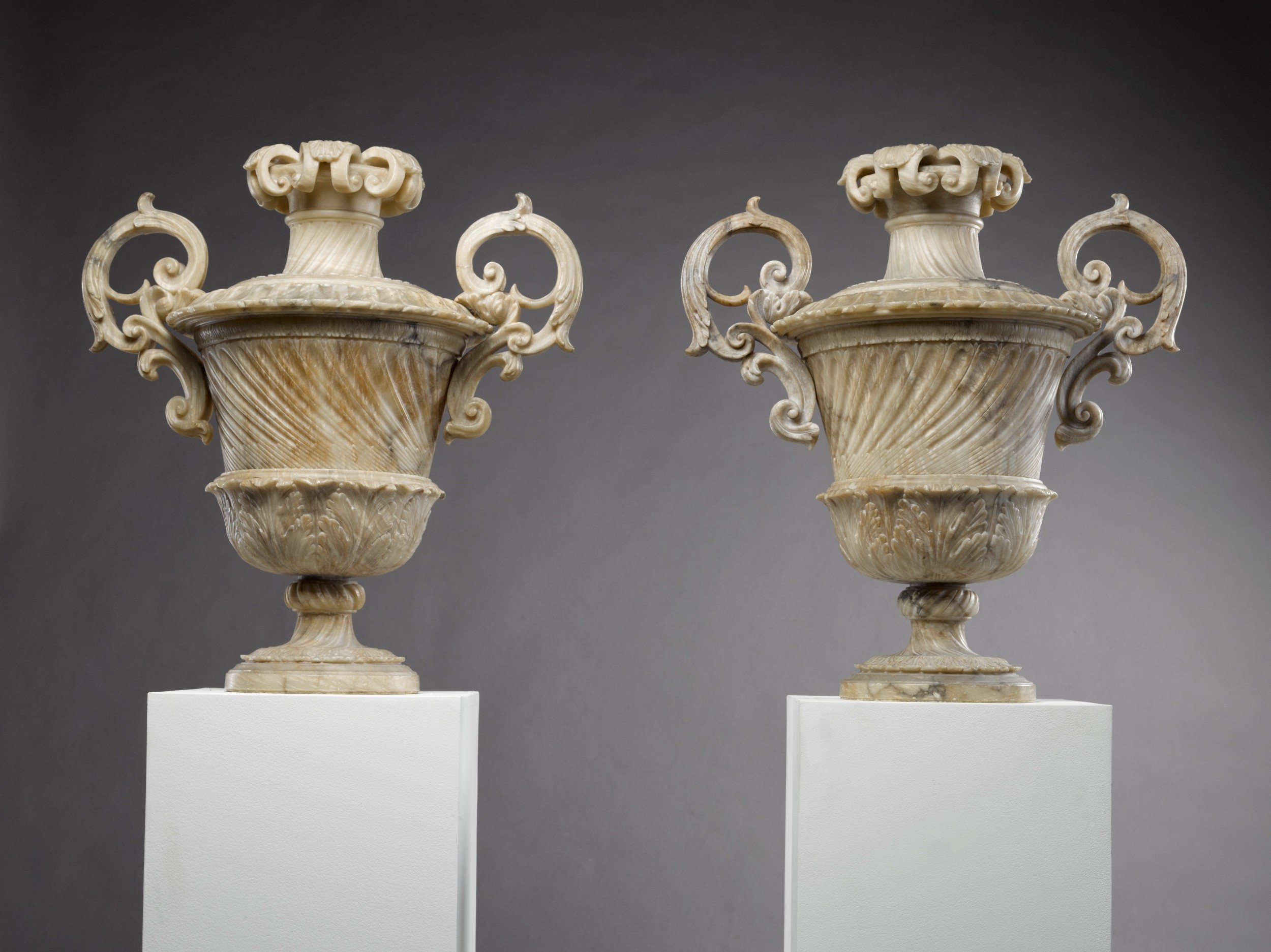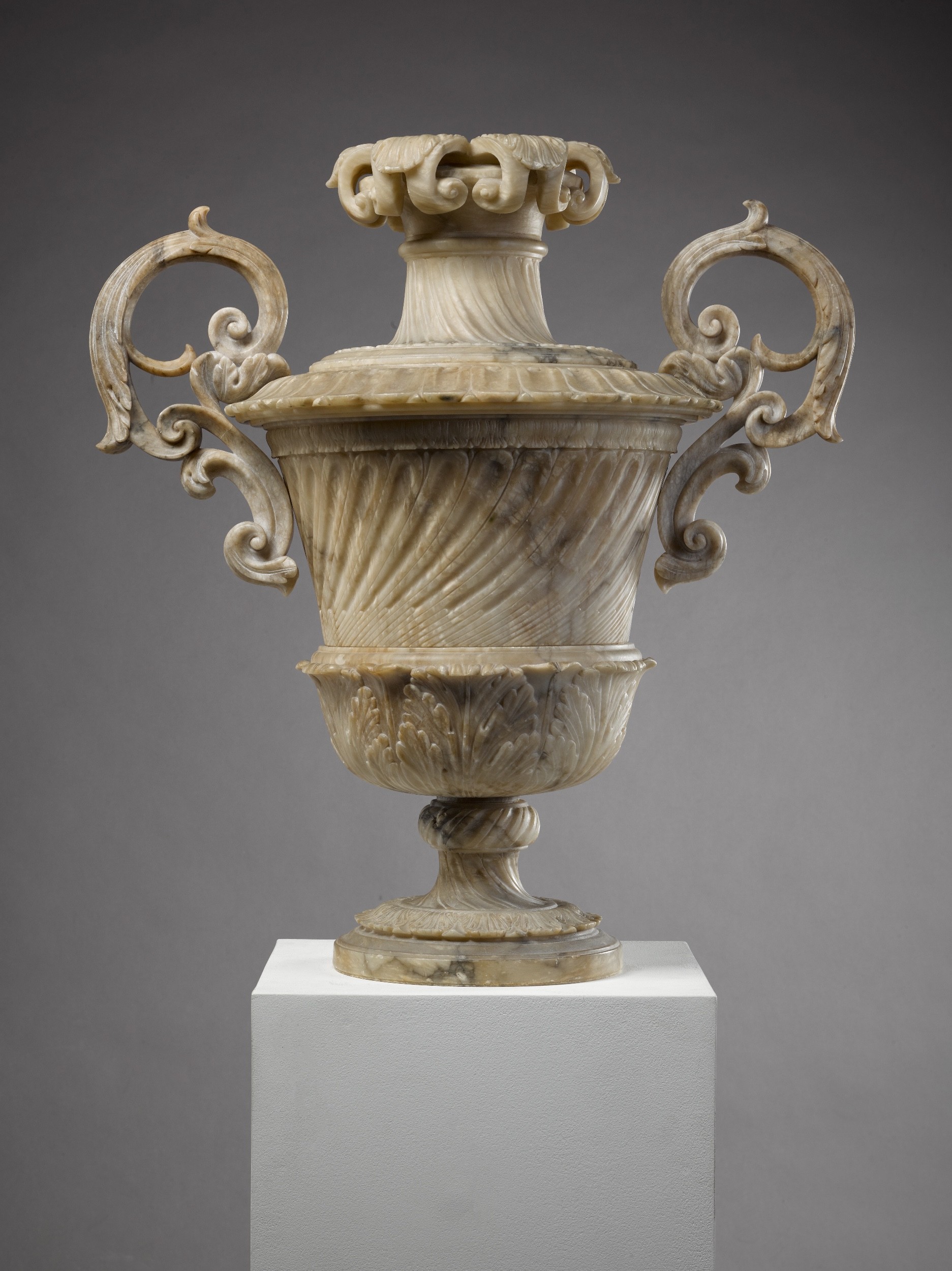1750
A Rare Pair of 18th-Century Sicilian Alabaster Vases. Circa 1750
These spectacular vases carved from alabaster are very similar to one in the Sala del Palchetto at the Royal Castle of Racconigi in Piedmont, Italy. The room is also known as the entrance hall, serving as an antechamber and leads to the private apartments of Carlo Alberto and Maria Teresa and to those of the first King of Italy Vittorio Emanuele II and Maria Adelaide.
Both these vases and that at Racconigi seem to be part of a group of similarly carved alabaster vases celebrated for the virtuosity of their designs and discussed in Alvar Gonzàlez-Palacios, Arredi e Ornamenti alla Corte di Roma, 2004, pp.110-111. Another vase is recorded at Palazzo Corsini alla Lungara, Rome, though the photograph is not clear, it displays a vase with similar handles. Two other vases sharing similar qualities were sold from the Castello di Uggiano, Florence, at Sotheby's, Milan, 19-20 March 1997, lots 381 and 382.
Interestingly, a drawing attributed to Mauro Tesi, called Maurino (1730-1766) features a vase of similar structure and with related decorative elements as this pair and are illustrated in Peter Fuhring, Designing into art, 1989, p.352, no 542 from the Lodewijk Houthakker Collection
Alabaster in Italy
The tradition of carving alabaster began predominantly in the Renaissance with the work of Francesco Laurana and Domenico Gagini who both produced monumental alabaster groups and opened workshops that subsequently sold smaller works intended for export. The production of alabaster devotional images culminated in Trapani (Sicily) during the 18th century with mixed media ensembles (incorporating ivory and coral) and exuberant carvings of religious subjects with extraordinarily intricate openwork bases. As a main commercial port until the end of the 18th century, Trapani boasted a multitude of natural resources that were used by Italian artists.
Contact us today



